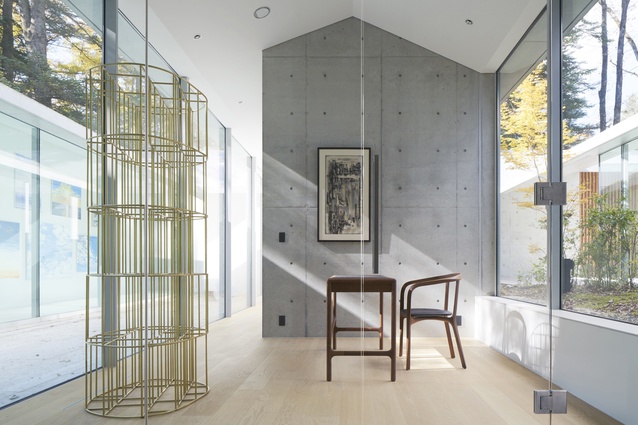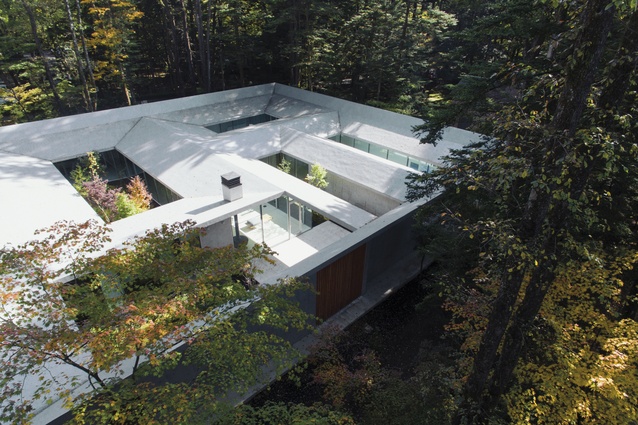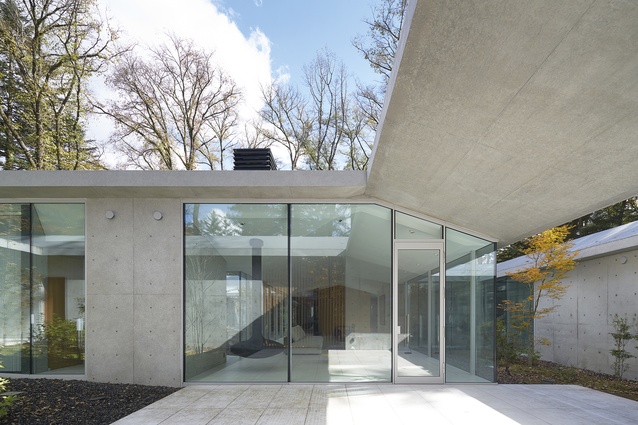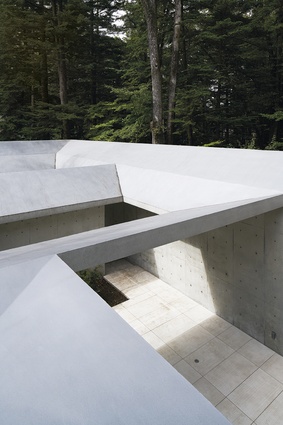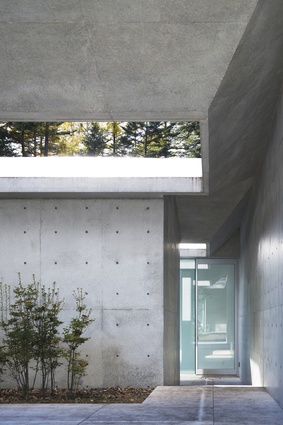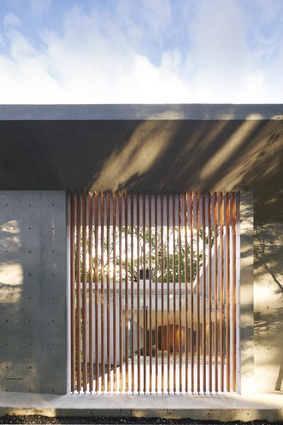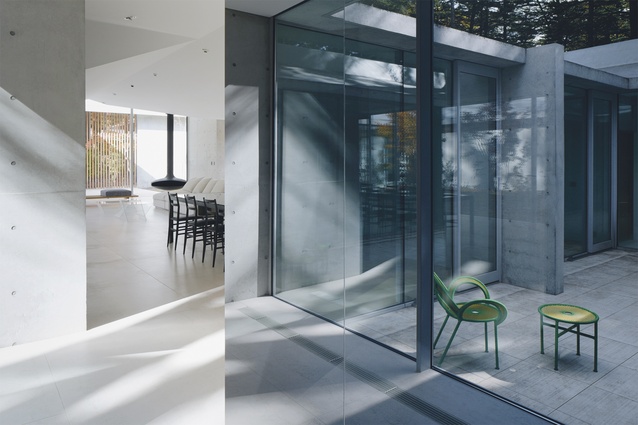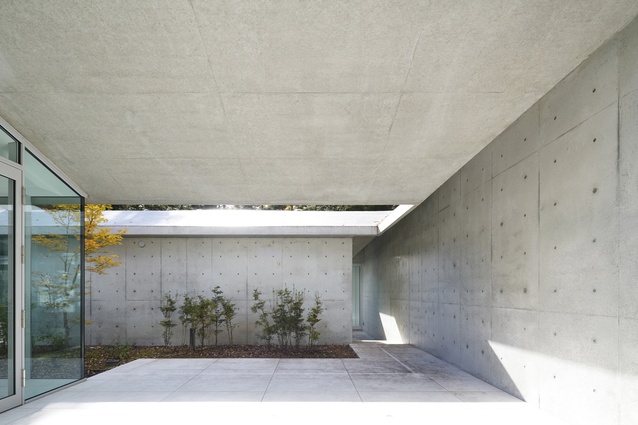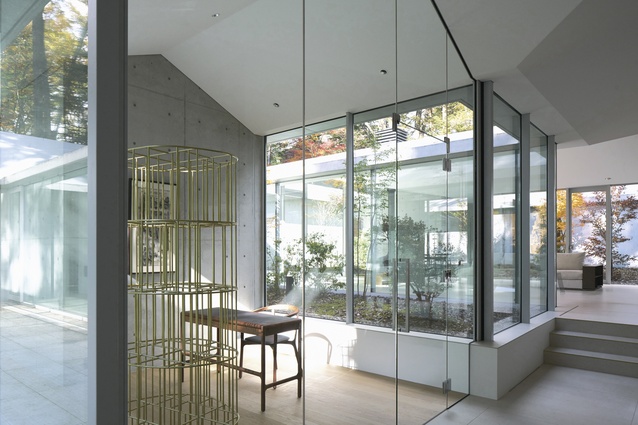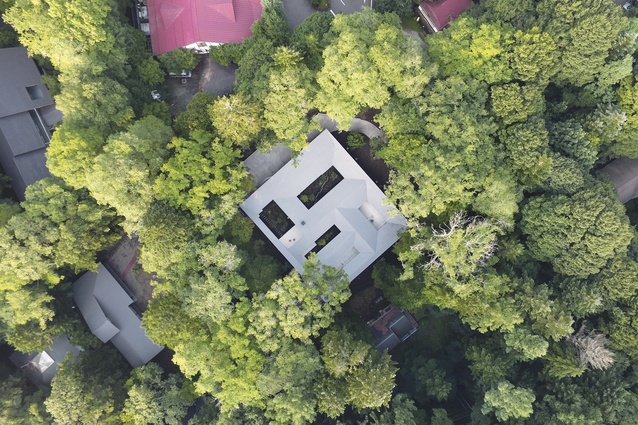Salute to the sun: Nagano House
Traditional Japanese architecture has a balanced relationship with nature and a temporal context. Spaces are layered to create buildings that coexist with nature and people, and they are configured to reflect the passing of time. This house, by architecture studio Assistant, is set in a forest in Nagano, Japan, where it provides a stage not just for daily life but also for the daily theatrics of the sun.
Arranged around five internal courtyards, every room is positioned and designed to capture the sun’s rays at varying times of the day, thereby casting choreographed light across the minimalist materials and awakening the ordered architecture.
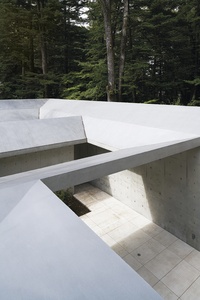
“The owner wanted a private space where he could be deeply inspired,” explain Megumi Matsubara and Hiroi Ariyama of Assistant. “He asked us to design a space that inspires one’s life and to design it without any compromise.”
The architects’ design concept was based on sunlight as the primary inhabitant of the house. “It is designed so that the phenomena of natural light can occur within the house, and residents and guests can witness its ever-changing quality and accompany it around the house as it shifts throughout the day.”
From the outside, the one-storey house appears as a closed and secluded form with a square plan and an exterior façade composed of concrete walls and black glass. But appearances can be deceptive, as once inside, the interior has a sense of transparency and transience.
With each internal space opening to a courtyard via sliding glass doors, the house is filled with fresh air and sunlight and connected to the natural environment around it. Indeed, an objective of traditional Japanese architecture is to create a space that is neither indoors or outdoors; rather, it is an in-between space with its own atmosphere.
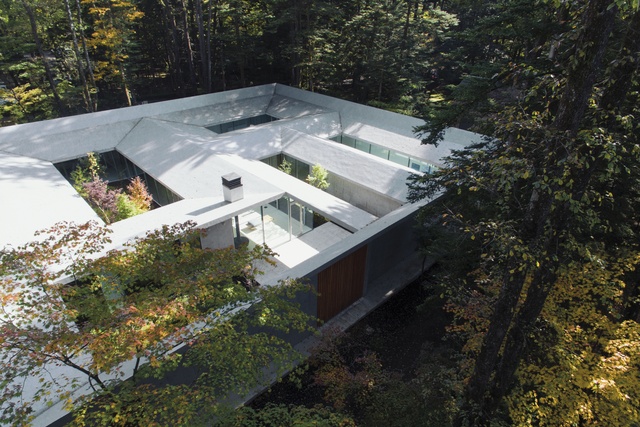
Five outdoor courtyards define the interior organisation of the house with all rooms facing at least one courtyard. The rooms are configured according to when they receive natural light through the opening of the courtyard with the effects of light and shadow enlivening each space.
“Sunlight is very happy inside and its effect is constantly moving around the house depending on the different times, days, seasons, weather and colours of the sky,” Ariyama says.
The living room is in the centre of the house where it is directly surrounded by three courtyards and thus receives sunlight all day, while the owner’s art collection is hung in a gallery along the south-west wall of the house where it receives the first rays of morning light.
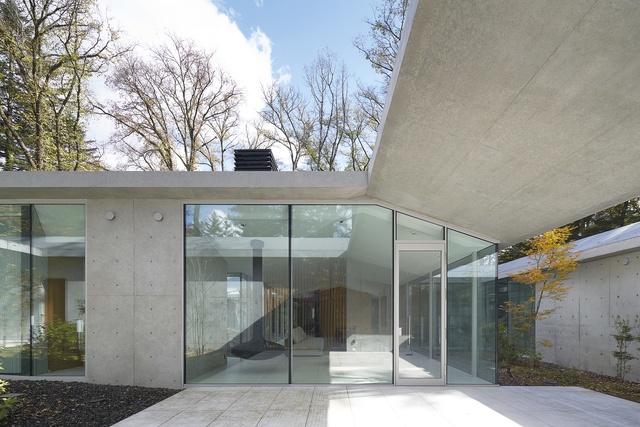
The master bedroom is located across the narrow courtyard from the gallery so that the owner can see his artworks drenched in fresh light when he wakes in the morning. On the other hand, sunlight is blocked from particular spaces at various times of the day as well, allowing people within the house, or even just in one room, to choose their seat, depending on the amount of light they wish to receive.
Glass doors not only open to the courtyards but also subdivide interior spaces, enabling natural light to permeate each room. In addition, Matsubara and Ariyama used concrete and black glass for the effects sunlight creates as it hits their surfaces.
“We simplified the materials to take advantage of the wonders of light within the house. Shadows of nature are cast on the solid concrete walls, and black glass produces a kaleidoscopic effect as it reflects the courtyard scenes,” says Matsubara.
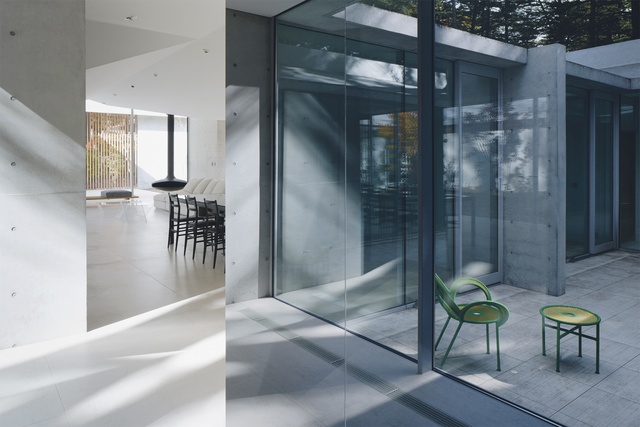
These ever-shifting shadows and mirror effects create delicate patterns that add to the sense of layering throughout the home as well as capturing the vital quality of change and temporality in Japanese architecture and nature.
The volumes of the house have been designed sensitively with slanted ceilings, tilted roofs and angled walls to invite light inside and to influence the casting of shadows.
“In this way, the house is a hybrid of Japanese architecture, which has a horizontal relationship to nature (connecting through rice-paper windows and borrowing scenes from the surrounding environment), and Islamic architecture, which is vertical (inviting light strictly from the top),” the architects explain.
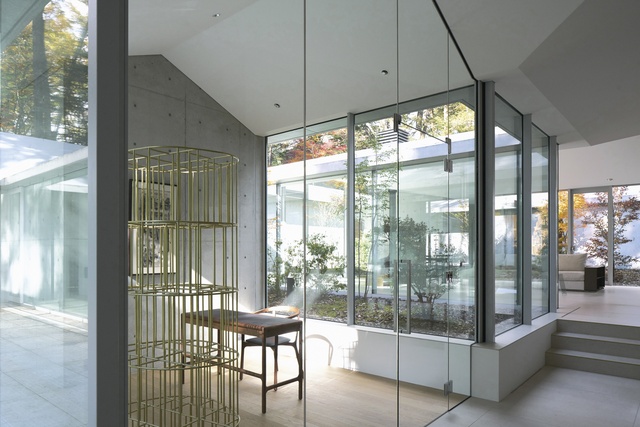
Each of the courtyards has its own distinct character and, like the interior spaces, is designed in relation to its surrounding environment – be it the adjacent room, direction of light or planted landscape. Two courtyards are paved – one is bare and one has potplants and cut flowers – and three have plantings that bloom at different times of the year.
Isolated from the world outside the house, the courtyards form a microcosm of light, air and nature that connect the interior spaces with the sky.
Designed with a purity of form and aesthetics, this house is energised by the daily performance of the sun and nature. As the shafts of light and plays of shadow create an ever-changing environment, it provides a constantly shifting stage for the performance of daily life.

